Research on Integrated Control Strategy for Wind Turbine Blade Life
Abstract
:1. Introduction
- We established a crack propagation model for blades based on Paris’ law and applied the rain-flow counting method to solve the cyclic stress on the blades in order to obtain the strength factor in the model.
- We propose a Bayesian-based method for predicting the remaining life of blades, which addresses the issue of infinite integration in Bayesian filters. We implement it using a particle filtering algorithm, which provides a suboptimal solution for the Bayesian estimator through Monte Carlo integration. Simulation shows that, although particle filtering has a high time cost, it has more advantages in terms of lifetime distribution and prediction stability.
- We designed an SDAC controller and adjusted the controller parameters based on the predicted lifespan, effectively reducing the fatigue of the pitch control actuator and extending its service life. In response to the presence of untreated process noise and measurement noise in traditional interference correction control, we have adopted the Kalman filter method to improve the robustness of the controller.
- We calculated the operation and maintenance costs under traditional control strategies and our proposed strategy and found that adopting the strategy proposed in this paper can effectively reduce the operation and maintenance cost of the unit, which has practical engineering significance.
2. Materials and Methods
2.1. Wind Turbine System Model
2.2. The Basic Control Strategy for Wind Turbines
2.3. Stochastic-Disturbance-Accommodating Control Based on Kalman Filter
2.4. Paris Crack Propagation Model
2.5. Blade Life Prediction Based on Particle Filter
- (1)
- When k = 1, establish a state space equation based on the damage degradation model of the blade, including the state transition equation and observation equation. According to the expected parameter initialization model in Table 1, introduce the error distribution in the iterative calculation of the long-term predicted crack propagation model, with the adjustment parameters Qa,k and Ra,k set.
- (2)
- Perform the Bayesian prediction step based on particle filtering and include the observation equation for the Bayesian update step.
- (3)
- If the estimated state after updating exceeds the threshold, calculate the remaining service life. If it does not exceed the threshold, let the prediction time k = k + 1, go back to the second step, and continue the iteration.
- (1)
- When LBi < 0, the expected Le in the predicted life distribution meets the requirement Lref given by the inspection and maintenance strategy, and there is no need to change the load-shedding capacity of blade i.
- (2)
- When 0 < LBi < 1, the expected Le of the predicted life distribution does not satisfy Lref, but the time node Lb satisfies Lref. Therefore, it is necessary to strengthen the load-shedding ability of blade i.
- (3)
- When LBi > 1, the expected Le of the predicted life distribution does not satisfy Lref, and Lb also does not satisfy Lref. Therefore, the load-shedding ability of blade i needs to be further strengthened.
3. Results
Simulation Results and Analysis
4. Conclusions
Author Contributions
Funding
Informed Consent Statement
Data Availability Statement
Conflicts of Interest
Abbreviations
| Symbol | Quantity | Unit of Measurement |
| qi (i = 1, 2, 3) | the degrees of freedom of the blade to swing | / |
| qt | the degree of freedom of the tower’s front and rear bending | / |
| qg | the rotational degrees of freedom of the generator | / |
| v | the velocity vector | m/s |
| a | the acceleration vector | m/s2 |
| M | the mass matrix | / |
| f | the nonlinear equation of aerodynamics | / |
| t | the current time | s |
| wr | the rotor speed | r/min |
| Cp | the Power Coefficient | / |
| λ | the tip speed ratio | / |
| β | the pitch angle | degree |
| vhub | wind speed at the hub | m/s |
| z h m φi a Δ K R Δ S LBi Lref Le Lw wi Closs Ctran Cpeo Cins Crep Ccor | the relative height at the center of the wheel hub the height of the hub center above the ground the linear wind shear index the azimuth angle of the i-th blade the current crack length the stress intensity factor the stress ratio the stress range in each stress cycle the effective life coefficient of blade i at node 1 the reference time node the expected time node for the particle to reach the reference crack area the poorer time node for particles to reach the reference crack area leaf weight wind energy loss cost transportation cost cost for operation and maintenance personnel inspection cost preventive repair cost of leaves leaf corrective repair cost | m/s m/s 0.2~0.4 degree mm / / / / / kg CNY CNY CNY CNY CNY CNY |
References
- Arantegui, R.L.; Jäger-Waldau, A. Photovoltaics and wind status in the European union after the Paris agreement. Renew. Sustain. Energy Rev. 2018, 81, 2460–2471. [Google Scholar] [CrossRef]
- Froggatt, A.; Schneider, M. Nuclear Power Versus Renewable Energy—A Trend Analysis [Point of View]. Proc. IEEE 2020, 103, 487–490. [Google Scholar] [CrossRef]
- Zhuqiao, M.; Zheyu, R.; Tongguang, G.; Zewen, Y.; Yijie, H.; Yeqi, F. Design of fatigue endurance experiment method for automotive torsion beam based on rain-flow method. In Proceedings of the 2020 2nd International Conference on Artificial Intelligence and Advanced Manufacture (AIAM), Manchester, UK, 15–17 October 2020; pp. 428–432. [Google Scholar]
- Zhao, D.; Cui, L.; Liu, D. Bearing Weak Fault Feature Extraction Under Time-Varying Speed Conditions Based on Frequency Matching Demodulation Transform. IEEE/ASME Trans. Mechatron. 2023, 28, 1627–1637. [Google Scholar] [CrossRef]
- Li, X.; Teng, W.; Peng, D.; Ma, T.; Wu, X.; Liu, Y. Feature fusion model based health indicator construction and self-constraint state-space estimator for remaining useful life prediction of bearings in wind turbines. Reliab. Eng. Syst. Saf. 2023, 233, 109124. [Google Scholar] [CrossRef]
- Zhao, D.; Wang, H.; Cui, L. Frequency-chirprate synchro squeezing-based scaling chirplet transform for wind turbine nonstationary fault feature time–frequency representation. Mech. Syst. Signal Process. 2024, 209, 111112. [Google Scholar] [CrossRef]
- Xu, Z.; Bashir, M.; Liu, Q.; Miao, Z.; Wang, X.; Wang, J.; Ekere, N. A novel health indicator for intelligent prediction of rolling bearing remaining useful life based on unsupervised learning model. Comput. Ind. Eng. 2023, 176, 108999. [Google Scholar] [CrossRef]
- Cao, Y.; Jia, M.; Ding, Y.; Zhao, X.; Ding, P.; Gu, L. Complex domain extension network with multi-channels information fusion for remaining useful life prediction of rotating machinery. Mech. Syst. Signal Process. 2023, 192, 110190. [Google Scholar] [CrossRef]
- Thomas, M.; Boettcher, N.; Huish, C.; Shakya, P.; Seibi, A.C.; Arias, D.; Shekaramiz, M.; Masoum, M. Prediction of Wind Turbine Blade Fatigue and Life Using the National Renewable Energy Laboratory Open-Source Software. In Proceedings of the 2023 14th International Renewable Energy Congress (IREC), Sousse, Tunisia, 16–18 December 2023; pp. 1–6. [Google Scholar]
- Bi, J.; Jiao, J.; Ma, H.; Ge, X.; Wang, G.; Zhou, D. Prediction of Wind Turbine Blade Fatigue Life Based on GA-BP Neural Network. In Proceedings of the 2023 5th International Conference on System Reliability and Safety Engineering (SRSE), Beijing, China, 20–23 October 2023; pp. 297–303. [Google Scholar]
- Shakya, P.; Thomas, M.; Seibi, A.C.; Shekaramiz, M.; Masoum, M.A.S. Fluid-structure interaction and life prediction of small-scale damaged horizontal axis wind turbine blades. Results Eng. 2024, 23, 102388. [Google Scholar] [CrossRef]
- Thiele, F.; Wisbacher, S.; Diaconescu, S.; Ossmann, D.; Pfifer, H. Periodic LQG Wind Turbine Control with Adaptive Load Reduction. IFAC-Pap. OnLine 2023, 56, 7674–7679. [Google Scholar] [CrossRef]
- Tao, H. Research on Optimization Control Strategy Using Model Predictive Control of Wind Turbine Generators. In Proceedings of the 2023 IEEE Sustainable Power and Energy Conference (iSPEC), Chongqing, China, 29–30 November 2023; pp. 1–6. [Google Scholar] [CrossRef]
- Zhou, Y.; Bhowmick, P.; Zhang, L.; Chen, L.; Nagamune, R.; Li, Y. A model reference adaptive control framework for floating offshore wind turbines with collective and individual blade pitch strategy. Ocean. Eng. 2024, 291, 116054. [Google Scholar] [CrossRef]
- Wang, N.; Wright, A.D.; Johnson, K.E. Independent blade pitch controller design for a three-bladed turbine using disturbance accommodating control. In Proceedings of the 2016 American Control Conference (ACC), Boston, MA, USA, 6–8 July 2016; pp. 2301–2306. [Google Scholar]
- Cook, S.M.; Lawrence, D.A. Sensitivity of a physically realizable heliogyro root pitch control system to inherent damping models. Adv. Space Res. 2021, 67, 2696–2705. [Google Scholar] [CrossRef]
- Tang, Y.; Chang, Y.; Li, K. Applications of K-nearest neighbor algorithm in intelligent diagnosis of wind turbine blades damage. Renew. Energy 2023, 212, 855–864. [Google Scholar] [CrossRef]
- Hang, X.; Zhu, X.; Gao, X.; Wang, Y.; Liu, L. Study on crack monitoring method of wind turbine blade based on AI model: Integration of classification, detection, segmentation and fault level evaluation. Renew. Energy 2024, 224, 120152. [Google Scholar] [CrossRef]
- Tang, W.; Liu, C.; Zhang, B. Gated Fusion Based Transformer Model for Crack Detection on Wind Turbine Blade. Energy Eng. 2023, 120, 2667–2681. [Google Scholar] [CrossRef]
- Rizk, P.; Rizk, F.; Karganroudi, S.S.; Ilinca, A.; Younes, R.; Khoder, J. Advanced wind turbine blade inspection with hyperspectral imaging and 3D convolutional neural networks for damage detection. Energy AI 2024, 16, 100366. [Google Scholar] [CrossRef]
- Chen, J.; Yao, W.; Lu, Q.; Ren, Y.; Duan, W.; Kan, J.; Jiang, L. Adaptive active fault-tolerant MPPT control of variable-speed wind turbine considering generator actuator failure. Int. J. Electr. Power Energy Syst. 2022, 143, 108443. [Google Scholar] [CrossRef]
- Babu, P.S.; Sundarabalan, C.K.; Balasundar, C.; Krishnan, T.S. Fuzzy logic based optimal tip speed ratio MPPT controller for grid connected WECS. Mater. Today Proc. 2021, 45, 2544–2550. [Google Scholar] [CrossRef]
- Nasiri, M.; Milimonfared, J.; Fathi, S.H. Modeling, analysis and comparison of TSR and OTC methods for MPPT and power smoothing in permanent magnet synchronous generator-based wind turbines. Energy Convers. Manag. 2014, 86, 892–900. [Google Scholar] [CrossRef]
- Mitra, A.; Chakraborty, A. Wavelet LQR based gain scheduling for power regulation and vibration control of floating horizontal axis wind turbine with double-pitched rotor. Wind. Energy Eng. Res. 2024, 1, 100001. [Google Scholar] [CrossRef]
- Kitahara, M.; Kakiuchi, Y.; Yang, Y.; Nagayama, T. Adaptive Bayesian filter with data-driven sparse state space model for seismic response estimation. Mech. Syst. Signal Process. 2024, 208, 111048. [Google Scholar] [CrossRef]
- Bidaoui, H.; El Abbassi, I.; El Bouardi, A.; Darcherif, A. Wind Speed Data Analysis Using Weibull and Rayleigh Distribution Functions, Case Study: Five Cities Northern Morocco. Procedia Manuf. 2019, 32, 786–793. [Google Scholar] [CrossRef]

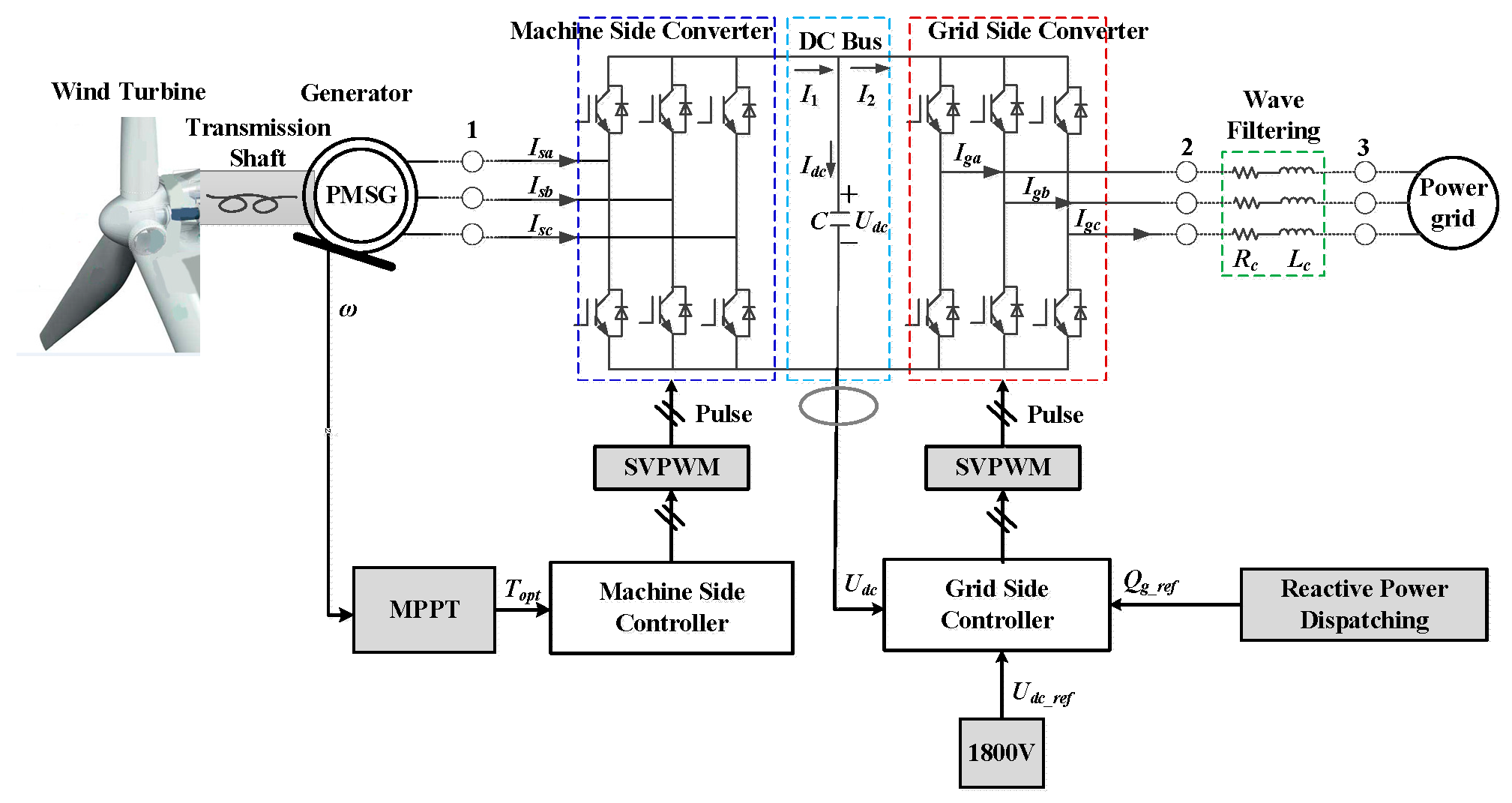

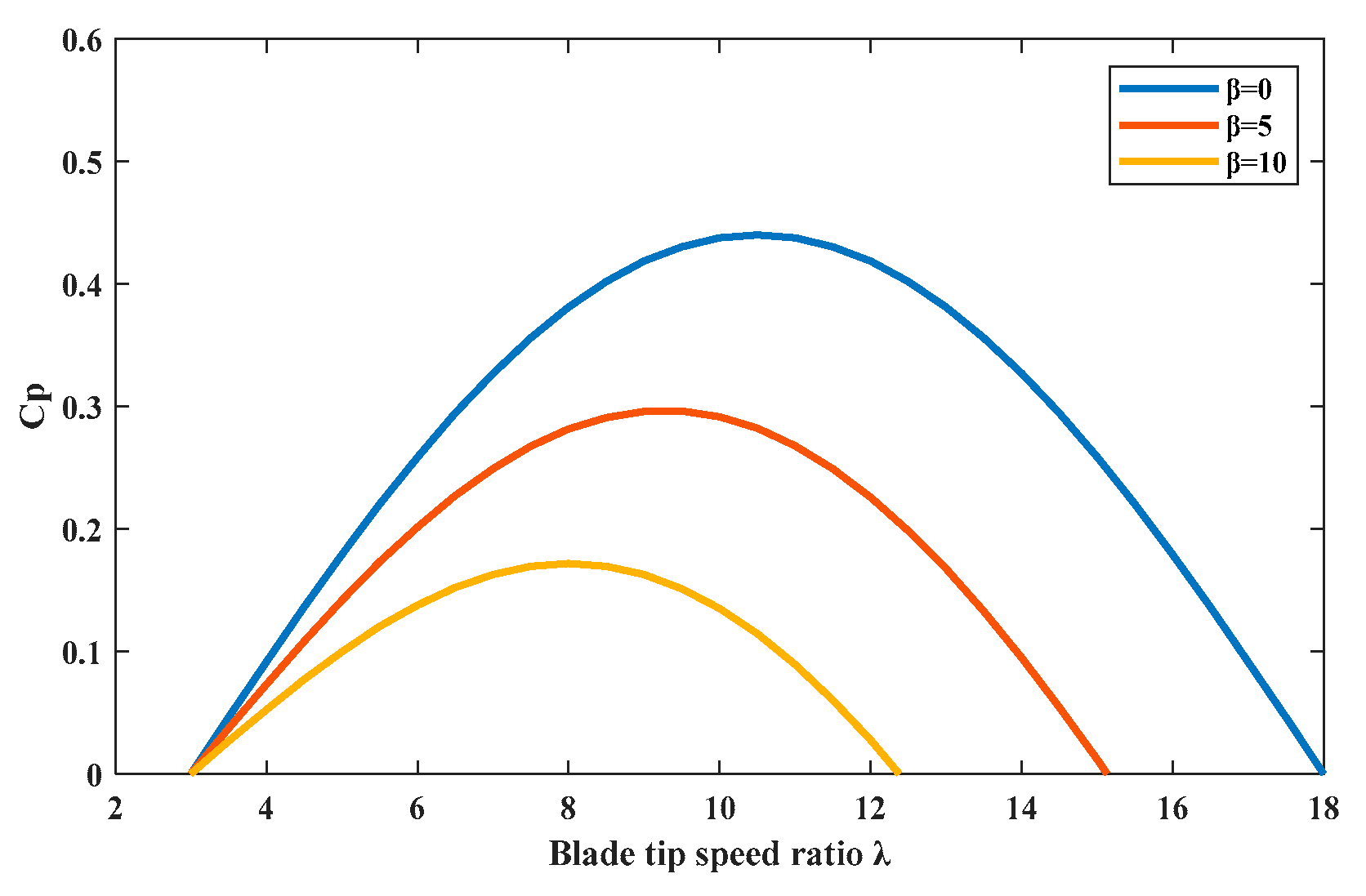


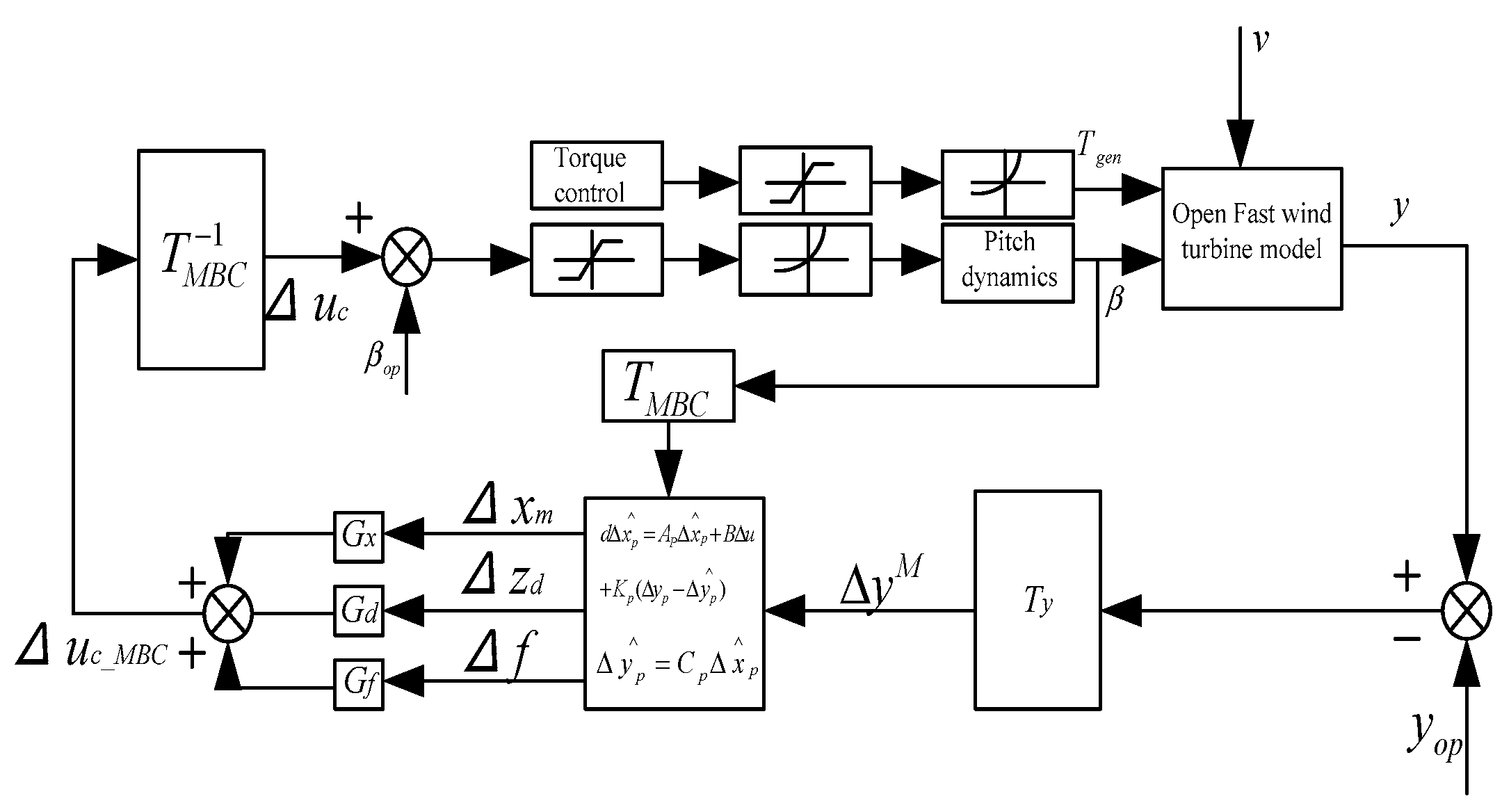
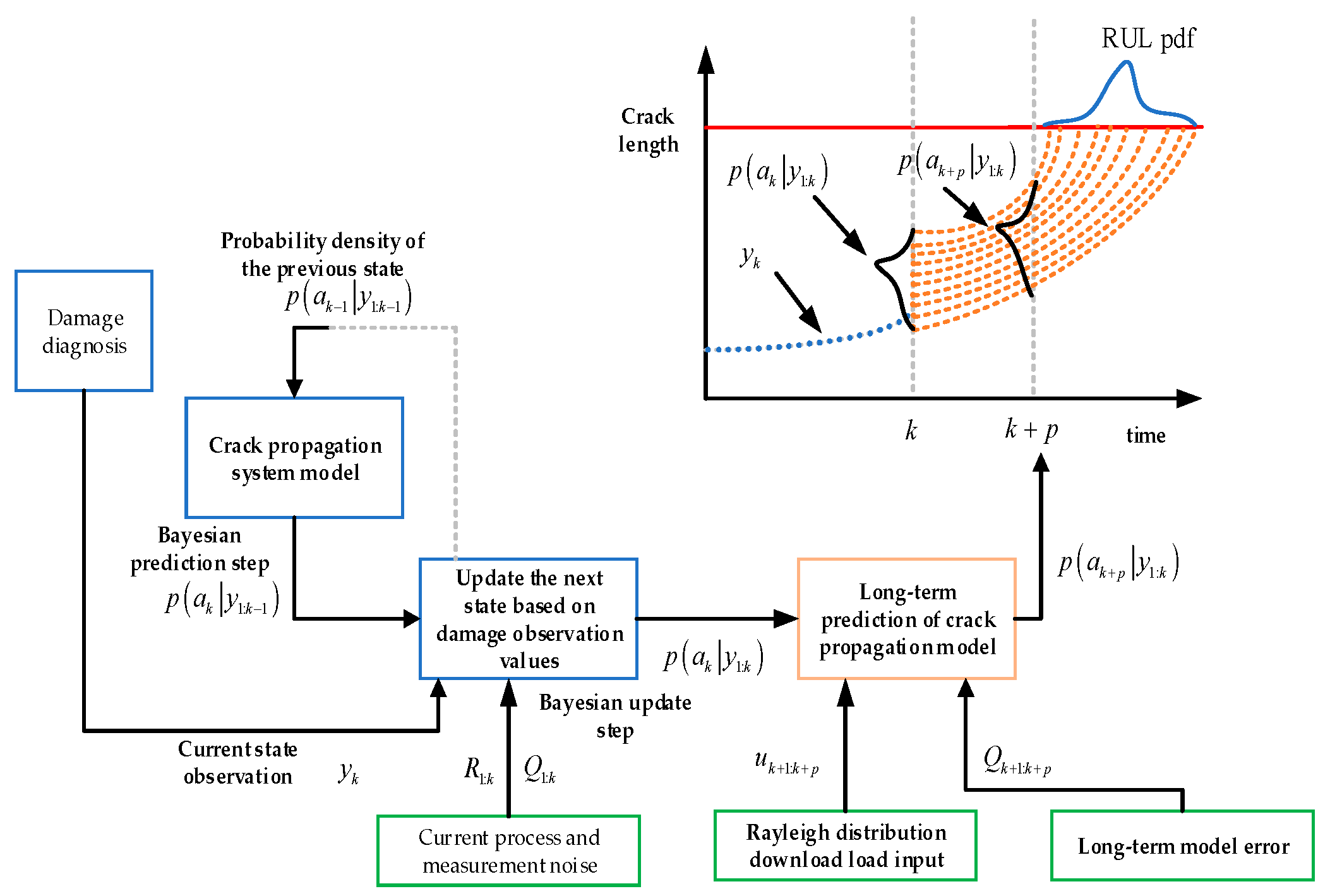

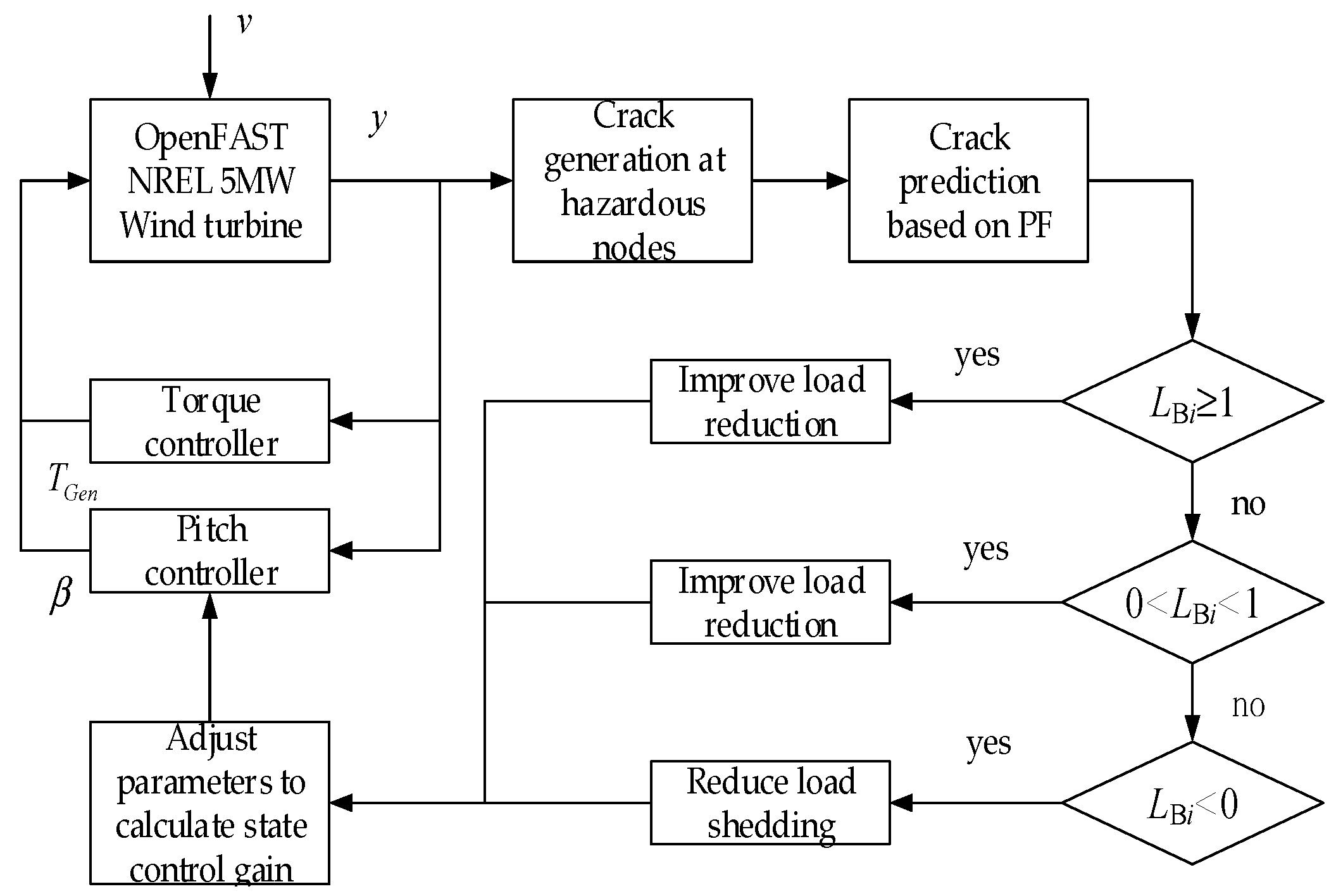



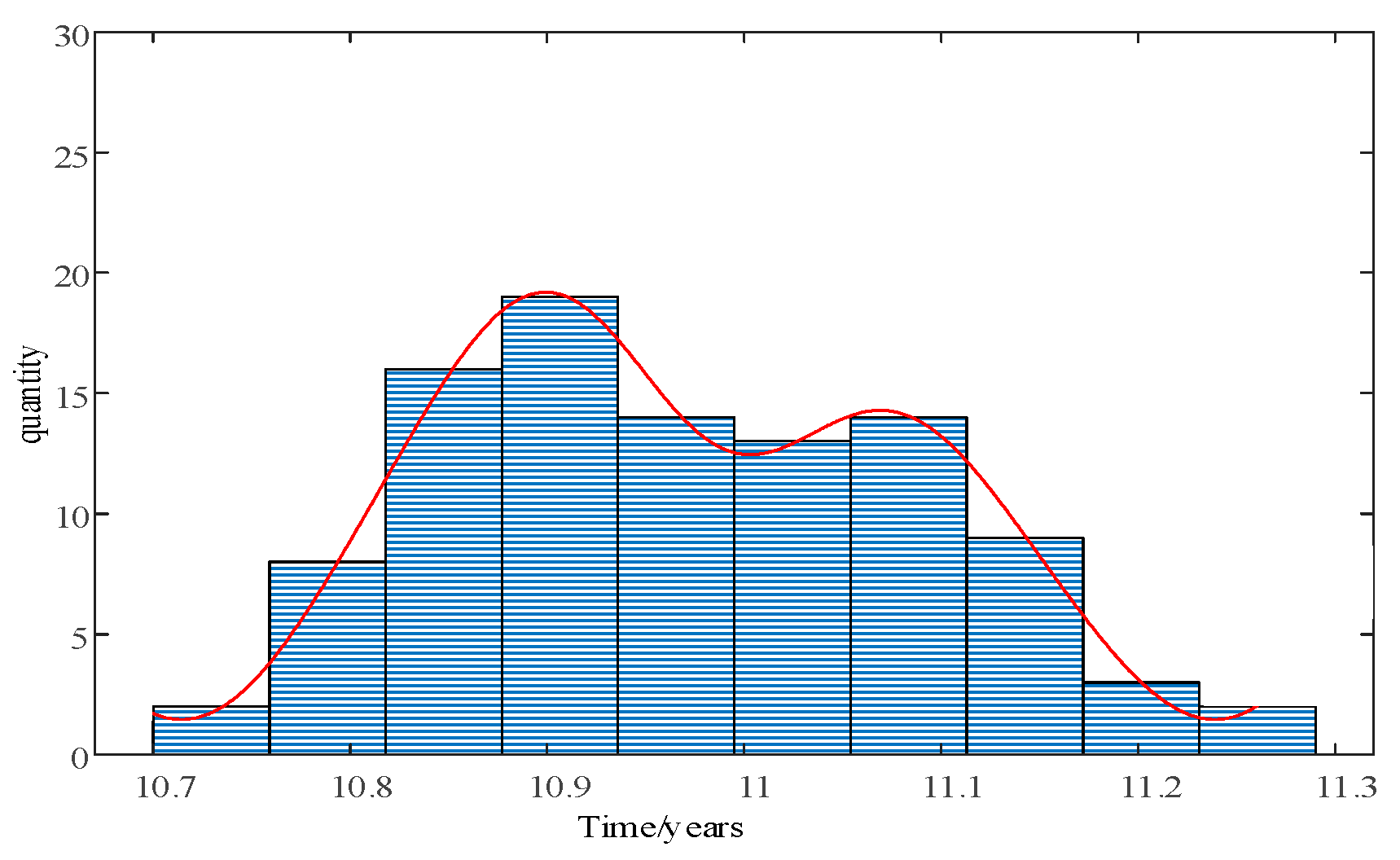
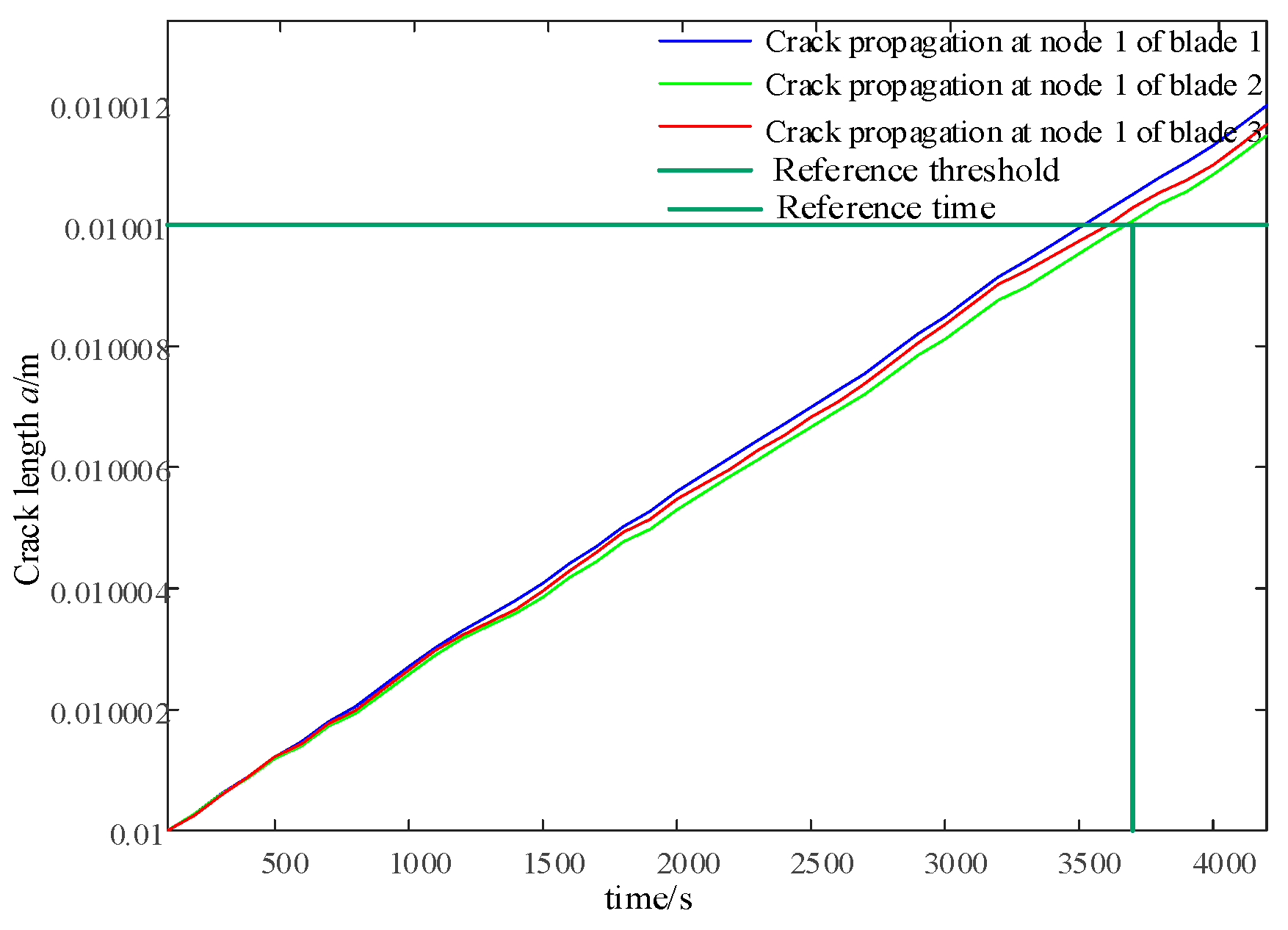
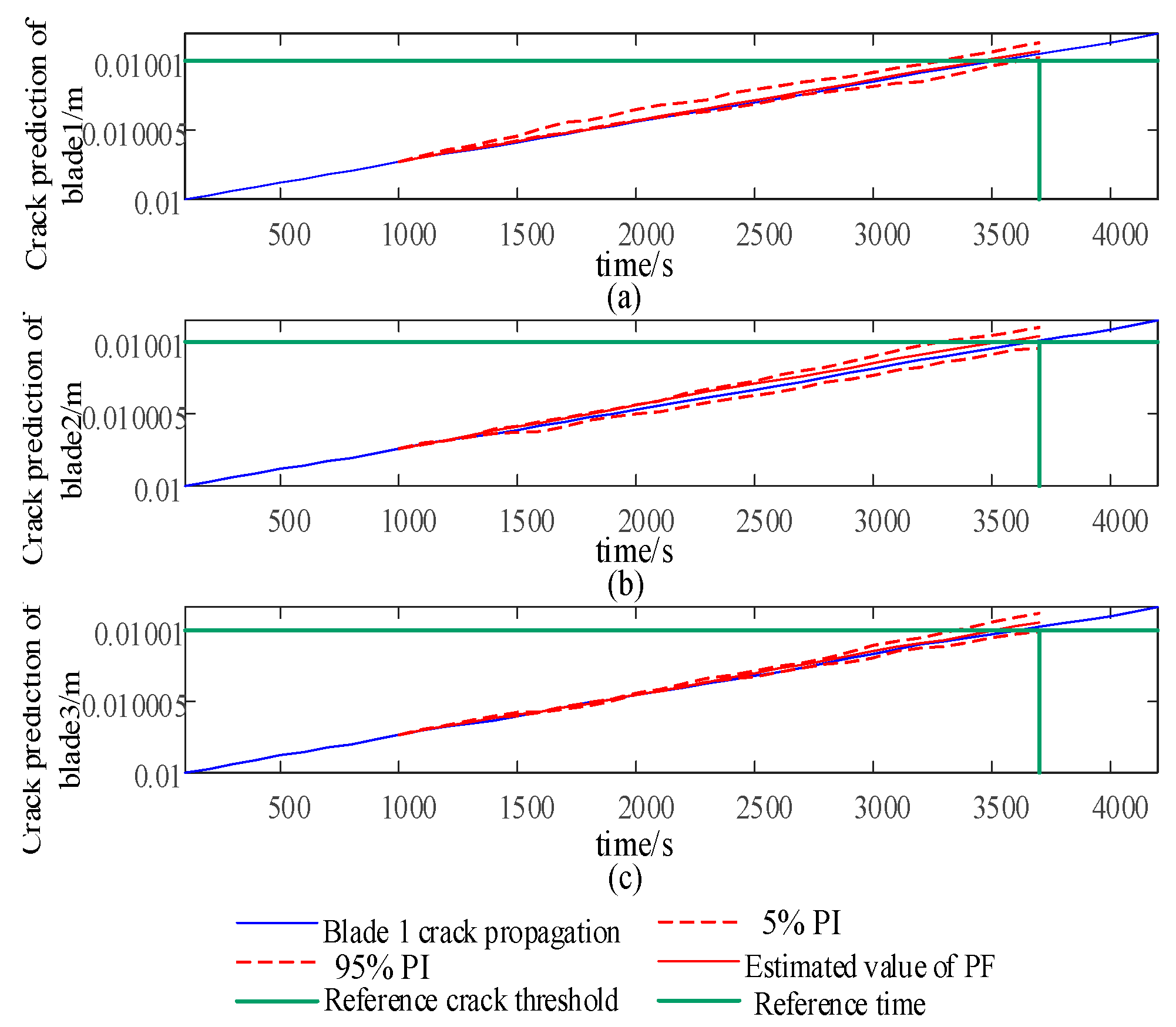

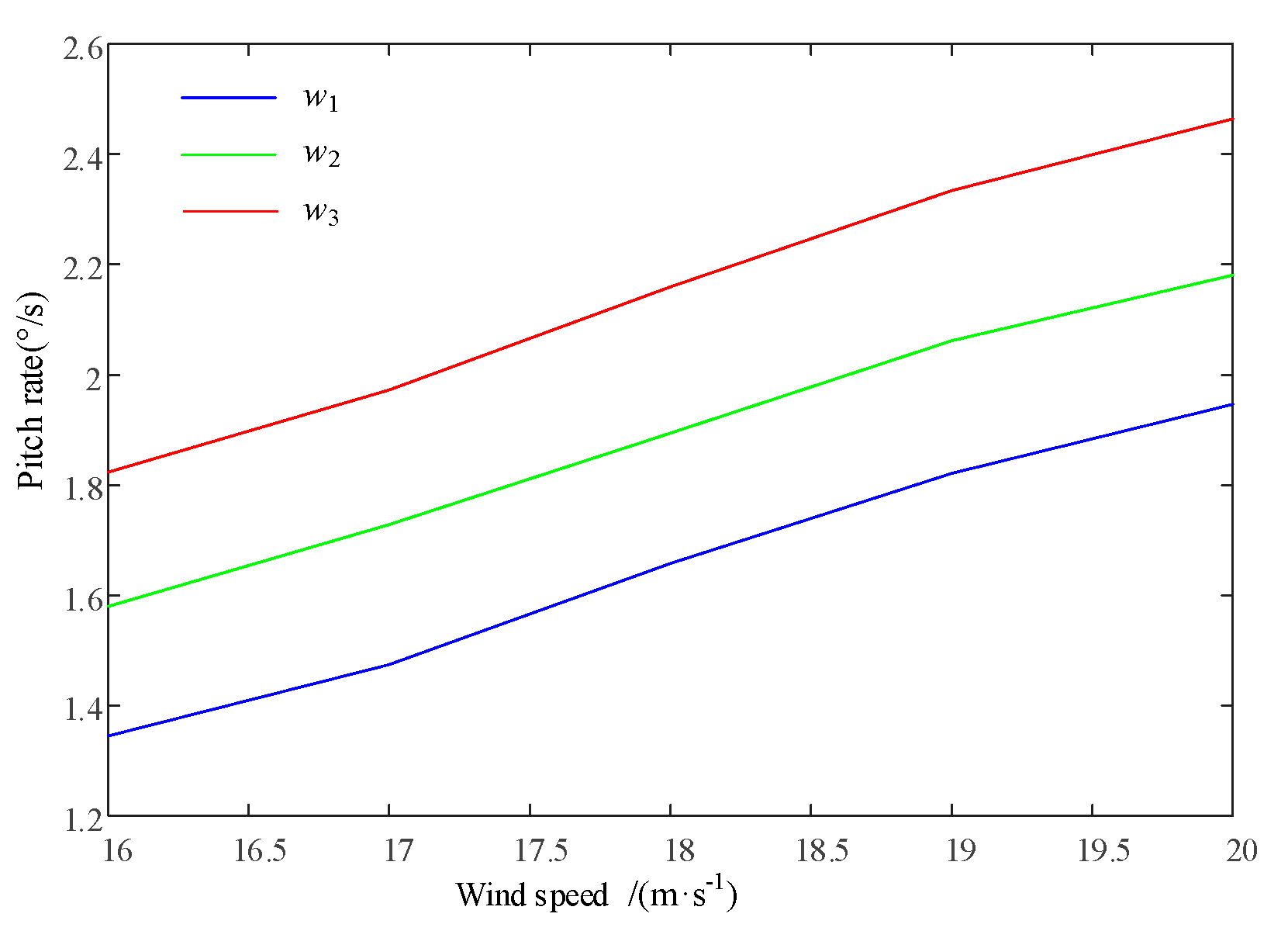
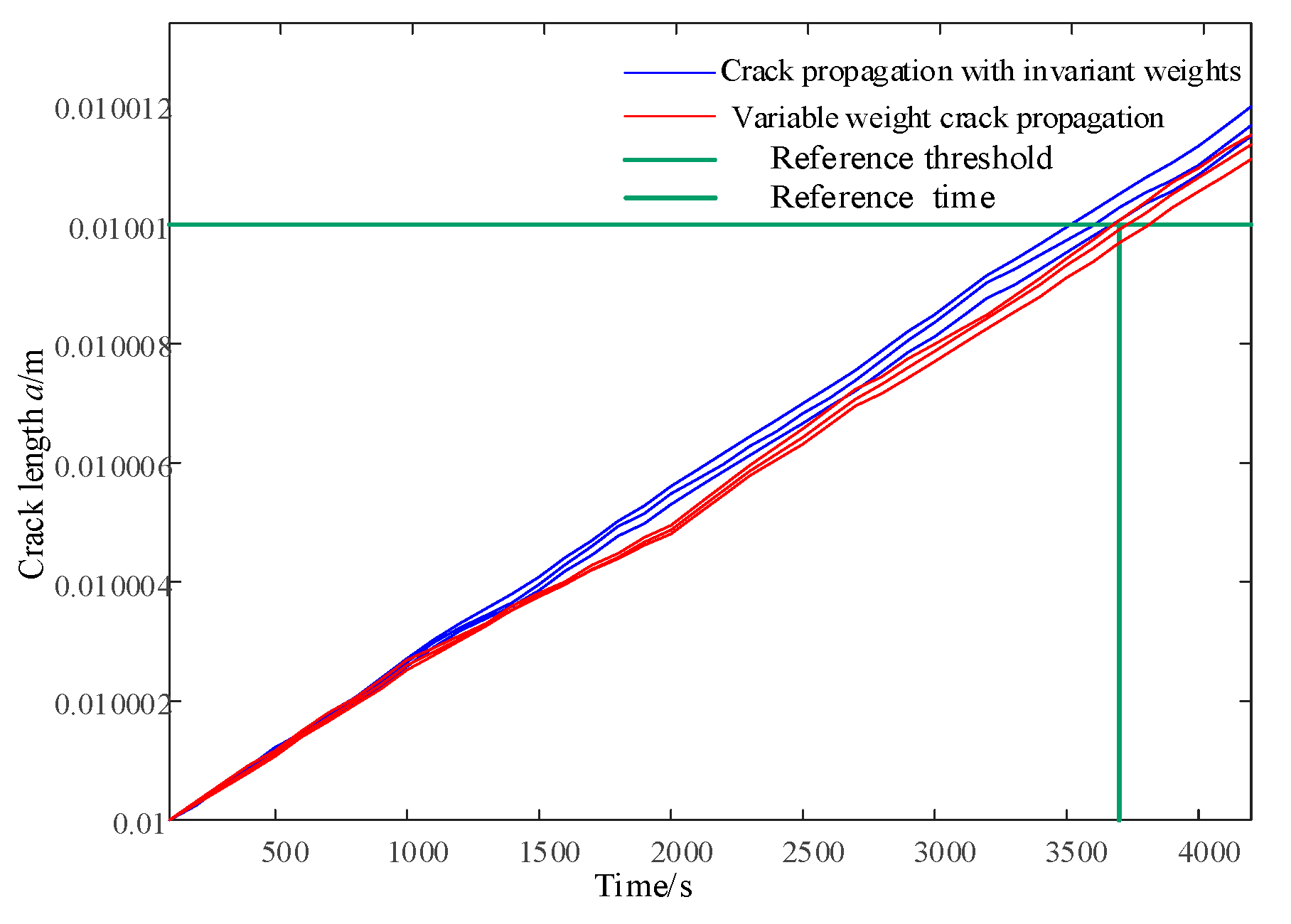
| Para. | Expectations | Variance | Distribution |
|---|---|---|---|
| A | 1.2 × 10−9 | 0.05 | N |
| m | 1.2 | 0.1 | N |
| λω | 0.8 | 0.01 | N |
| α | 1.0 | - | - |
| a | - | 5 × 10−3 | N |
| Costs | Calculation Results |
|---|---|
| Wind energy loss cost Closs, CNY | 0.75×Th,stop×P(v) |
| Transportation cost Ctran, CNY | 50,000×Td,stop |
| Cost for operation and maintenance personnel Cpeo | 300×Td,stop |
| Inspection cost Cins, CNY/time | Closs + Ctran + 3×Cpeo |
| Preventive repair cost of leaves Crep, CNY/time | 63,200 + Closs + Ctran + 3×Cpeo |
| Leaf corrective repair cost Ccor, CNY/time | 63,200 + Closs + Ctran + 12×Cpeo |
| Maintenance Strategy | Inspection Cost | Preventive Costs | Corrective Costs | Expected Total Cost |
|---|---|---|---|---|
| Corrective Maintenance | 0 | 0 | Closs + 4.26 × 106 | Closs + 4.26 × 106 |
| Defensive Maintenance | Closs + 0.572 × 106 | Closs + 1.5984 × 106 | 0 | Closs + 2.17 × 106 |
| Our strategy | Closs + 0.572 × 106 | Closs + 0.912 × 106 | 0 | Closs + 1.484 × 106 |
Disclaimer/Publisher’s Note: The statements, opinions and data contained in all publications are solely those of the individual author(s) and contributor(s) and not of MDPI and/or the editor(s). MDPI and/or the editor(s) disclaim responsibility for any injury to people or property resulting from any ideas, methods, instructions or products referred to in the content. |
© 2024 by the authors. Licensee MDPI, Basel, Switzerland. This article is an open access article distributed under the terms and conditions of the Creative Commons Attribution (CC BY) license (https://creativecommons.org/licenses/by/4.0/).
Share and Cite
An, B.; Liu, J.; Zhang, Z. Research on Integrated Control Strategy for Wind Turbine Blade Life. Sensors 2024, 24, 5729. https://doi.org/10.3390/s24175729
An B, Liu J, Zhang Z. Research on Integrated Control Strategy for Wind Turbine Blade Life. Sensors. 2024; 24(17):5729. https://doi.org/10.3390/s24175729
Chicago/Turabian StyleAn, Bairen, Jun Liu, and Zeqiu Zhang. 2024. "Research on Integrated Control Strategy for Wind Turbine Blade Life" Sensors 24, no. 17: 5729. https://doi.org/10.3390/s24175729







